Race Spotlight: 4 Deserts Sahara (Namibia)
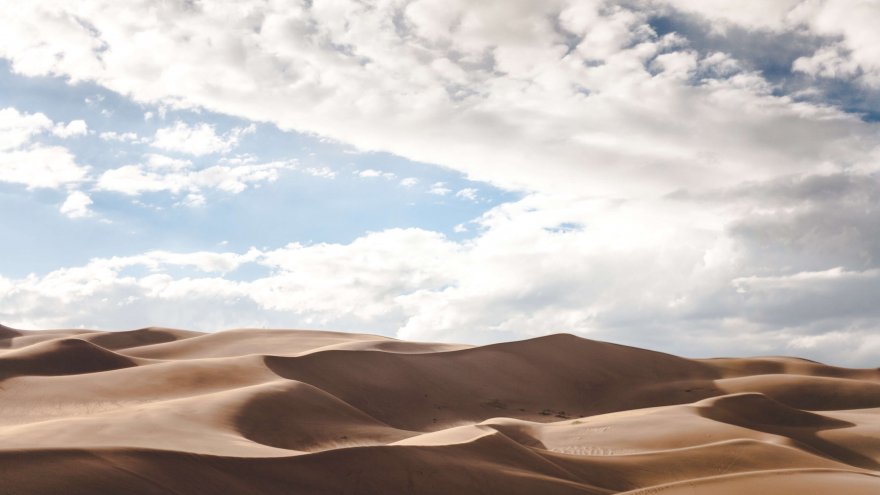
For the second year in a row, Namibia will be the host country for the 4 Deserts Sahara Race kicking off on 29 April. Due to political instability in Egypt, this race was temporarily moved to Jordan and then Namibia in 2017. The 4 Deserts Sahara (Namibia) race is one in a series of four of 7 days, 250 km foot races over rough country terrain. Runners are provided space in a tent and water. Food and mandatory supplies are carried on their backs for the duration of the race.
Other races in this prestigious collection include the Gobi March (China/Mongolia), the Atacama Crossing (Chile) and The Last Desert (Antarctica). A roving race called the RacingthePlanet Ultramarathon was also introduced into the mix in 2008. The location differs each year and has included Nepal, Madagascar, Iceland, and Patagonia.
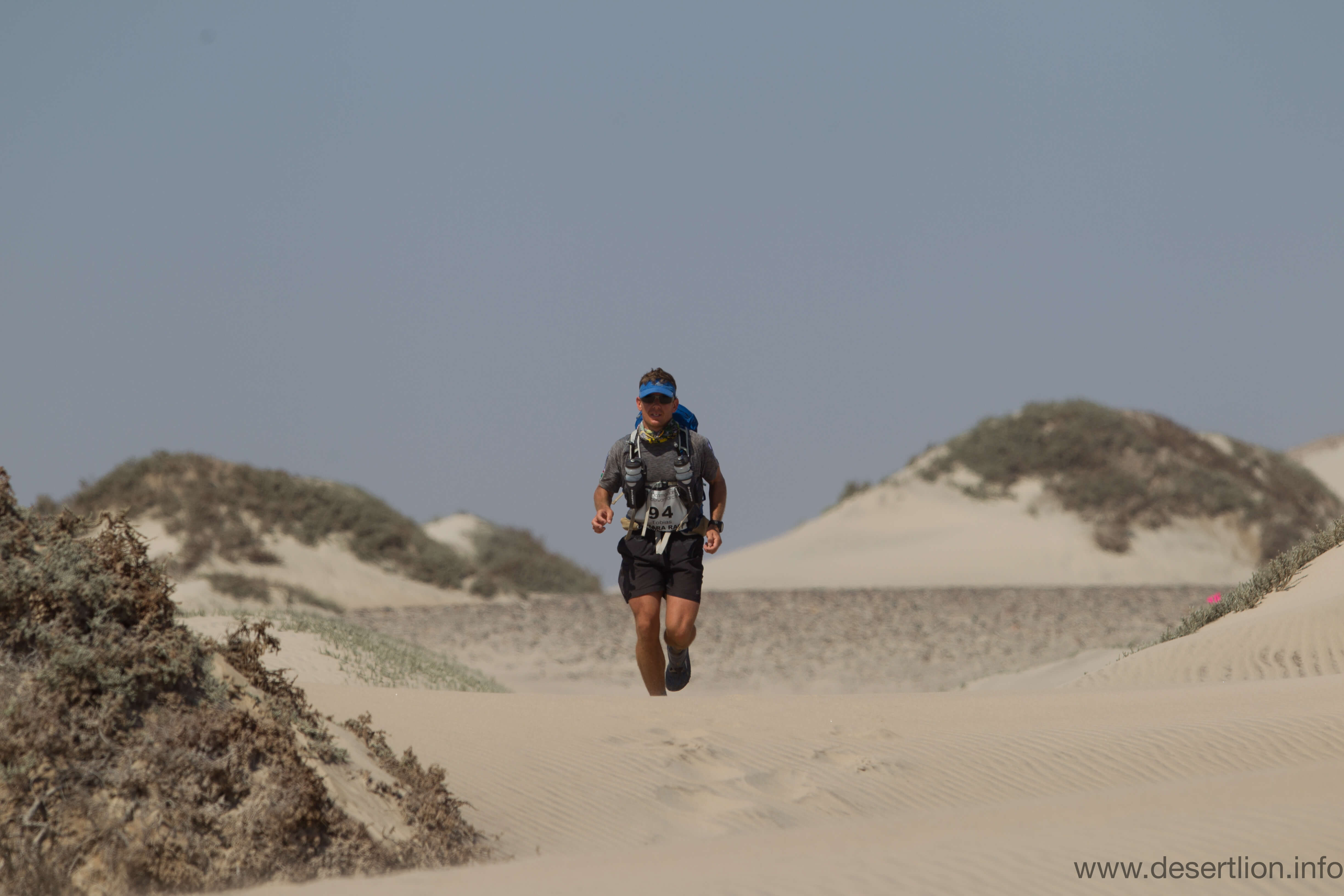
From a Participant’s Perspective
For a firsthand account of the race, RunnerClick interviewed Namibian Tobias Verwey (36) who placed 10th overall in the 4 Deserts Sahara (Namibia) race in 2017.
Tobias, a native of Windhoek completed his high school career in Swakopmund, the host town of the 4 Deserts Race. As a non-professional cricketer playing for the Namibian national team, he fell in love with running for the freedom it affords him as well as the fitness benefits.
Other races that Tobias has completed include the Fish River Canyon 100 km ultra where he placed 4th in 2015, the Otter African Trail Run and the Brandberg FKT Challenge. He says he entered the 4 Deserts race because he was looking for a challenge, both mentally and physically. And that he found it in running through some of the harshest terrain on earth: the Namib Desert.
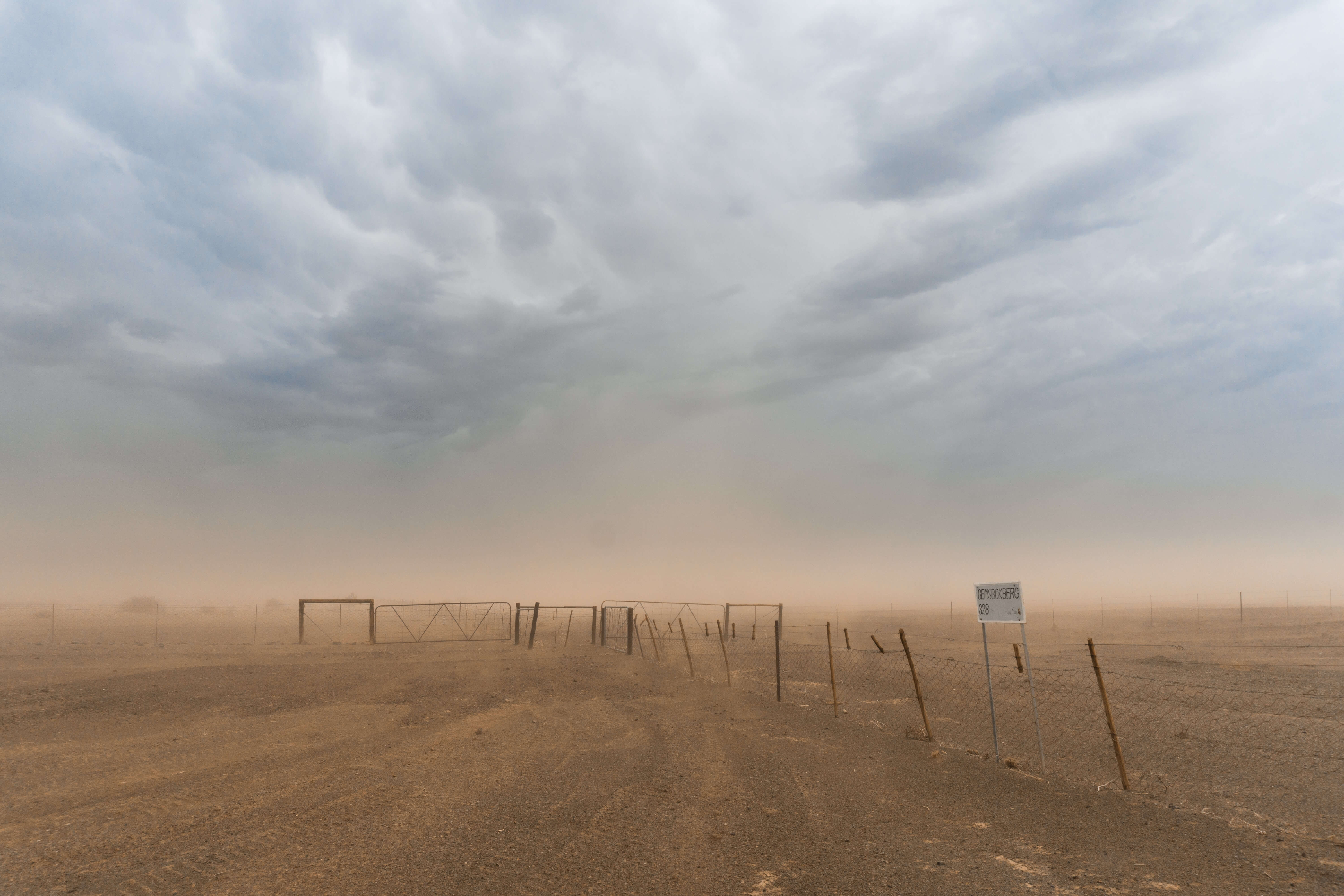
On Preparation
RC: How did you prepare for 4 Deserts?
TV: I started training 20 weeks before the race and spent a lot of time with a 10 kg pack on my back. I had four-week training cycles building up to a block of four days in a row at the end of each cycle. On weekdays I did some speed sessions and some short, high-intensity hill sessions. I included CrossFit for strength training and my running program was managed by Ian Waddell from Personal Best in Cape Town.
RC: What did you carry in your pack during the race?
TV: In my bag was a whole list of compulsory equipment, ranging from a multi-tool, a blister kit, space blanket, sleeping bag, sunscreen, headlamp and a backup torch, warm and rain jackets and so forth. Dinners were freeze-dried meals. They are very light (120g) for 800 – 1000 kcal. Breakfast and lunch was a wide range of nuts and energy bars. I used Hammer Nutrition’s Perpetuem for fuel while running and had a collection of cappuccino sticks and teabags. The big challenge is to keep your pack’s weight to the minimum. There’s a big difference between a 1 kg sleeping bag and a 400 g one!
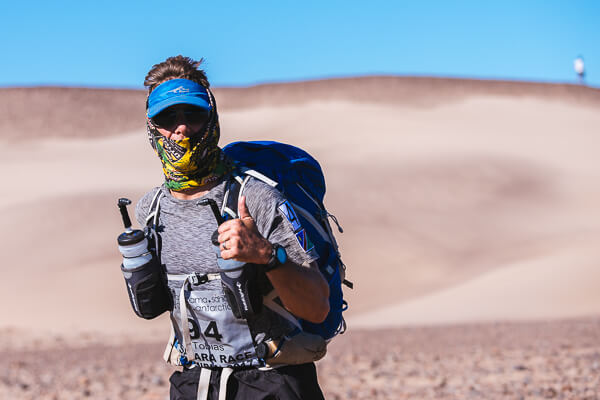
Race Week
RC: Describe a “typical” day on the race.
TV: The camp came to life from about 5:30 am. I would have a cup of coffee and something to eat before packing my bag for the day. Each stage started at 8 am after a short briefing. After the stage, it was time to recover and relax with the feet up as much as possible. Sometimes we would go to the finish line to cheer for runners as they finished. At night we would sit in small groups around the campfire, talking and eating dinner before bedtime.
RC: How did the sleeping go?
TV: The night before the first leg I nearly didn’t sleep at all. The excitement was too high and the camp was very busy and noisy throughout the night. From then on it was better as I got more tired. After day two the camp was quiet very early at night as the long stages started taking its toll! I would definitely recommend taking earplugs and a sleeping pad. This would be especially handy in the hard rocky desert after stage 3 and 4!
RC: Tell us about the cause that you ran for.
TV: I represented the Desert Lion Conservation project run by Dr. Flip Stander. He works tirelessly to ensure the conservation of the small lion population that roams freely in northern Namibia. Dr. Stander monitors their population ecology and manages the human-lion conflict in the area. Some of the lions are collared, so Dr. Stander could advise the race organizers of the whereabouts of the lions during the duration of the race as we shared their territory.
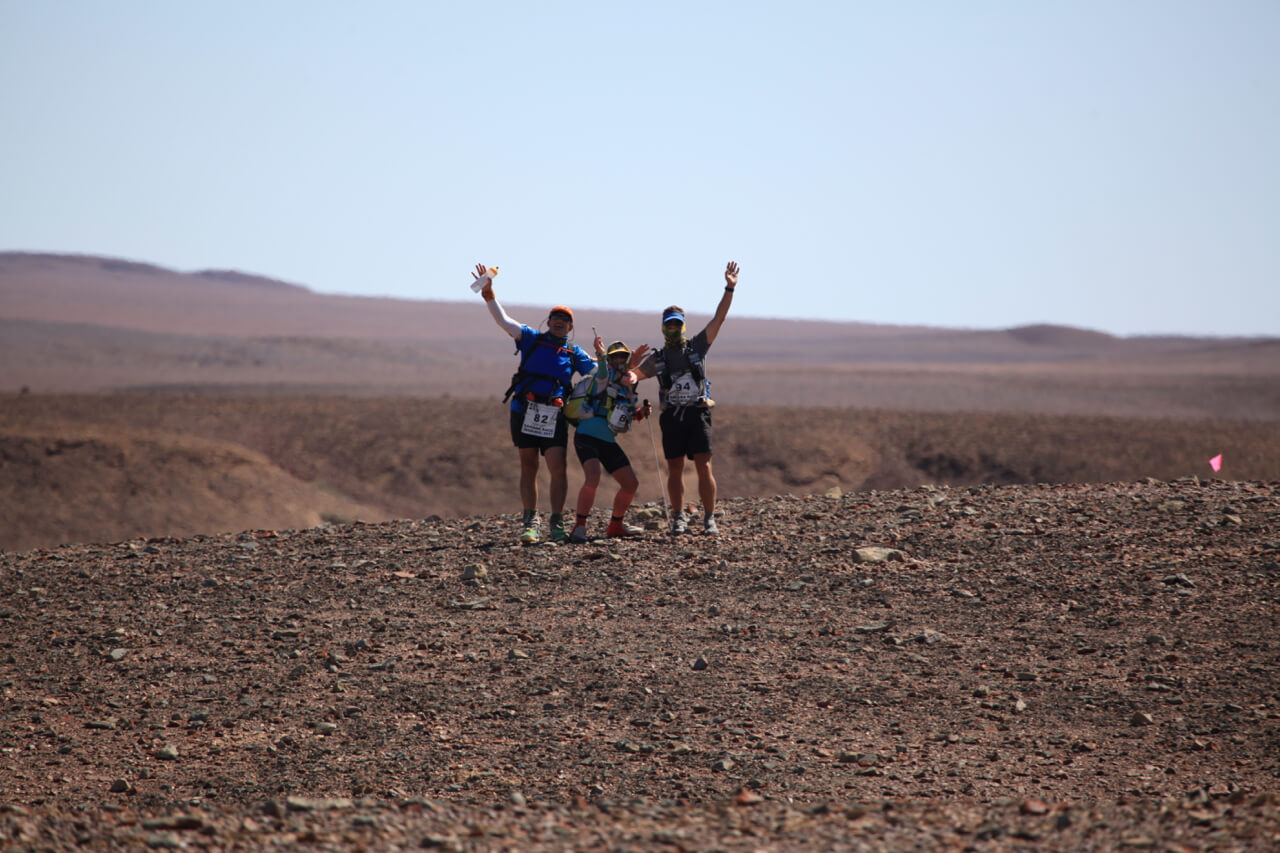
Highs and Lows
RC: Describe your hardest 4 Deserts day?
TV: My hardest days were day 3 where my hip started giving me problems and then day 4, the 80 km long march stage. With my hip injury, I was reduced to a walk. To add insult to injury (literally) we were greeted with the infamous east wind on the day of the long march. We had the howling, hot bergwind in our faces the entire day, with temperatures up to 52 °C. There was just no relief, as the water at all the checkpoints was dreadfully hot. Runners were passing out from heat exhaustion and many had to drop out of the race because of the heat. It was incredibly long and tough day. There are actually no words to fully describe the experience to a person who wasn’t there.
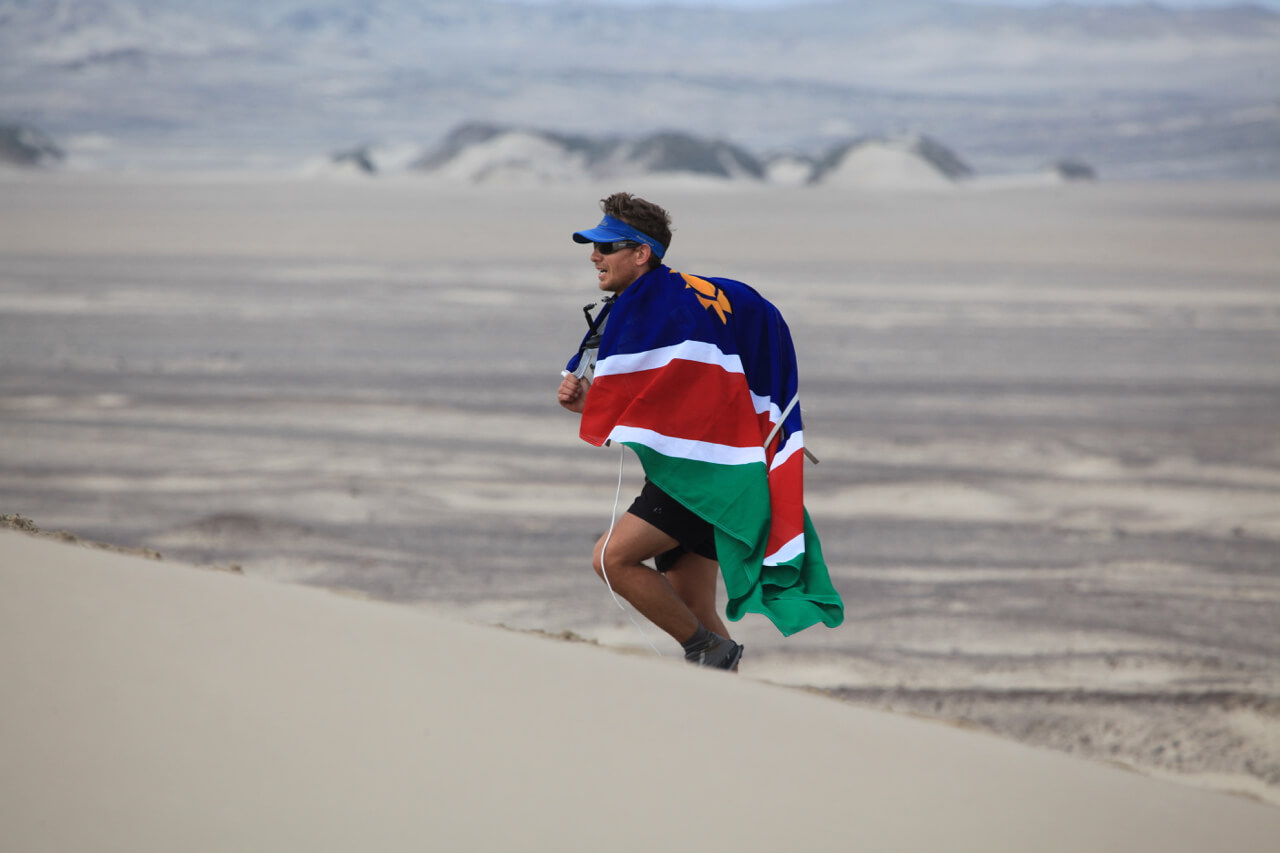
RC: What was the highlight for you of the race?
TV: To experience the desert like I never have before. Also to make new friends as we sat talking, sharing war stories around the campfire at night, eating delicious freeze dried meals. As it was, the long march was also one of the highlights for me. It was an incredible feeling of satisfaction and accomplishment to finish the stage just before midnight after walking more than 12 hours of the stage with fellow Namibian Hannes Smith and South African Kriss Starck. We were talking about everything and what not and encouraged each other. That was one of those days that no money can buy and that’s one of the reasons we do these kinds of crazy races!
RC: What was your overall time and place in the race?
TV: I finished the 7-day race in an overall 10th place in a total time of 35h45, after finishing stage 5 in 5th place and stage 6 in 4th place.
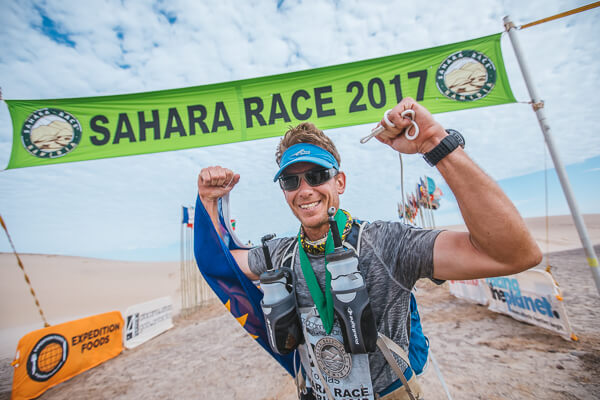
Final Words
RC: Do you have any other advice to give to potential runners?
TV: This is a once in a lifetime race, so take some time to prepare properly, it will make your race so much more enjoyable. Pack, pack and repack again! Every gram goes on your back, so the lighter your pack, the more comfortable it will be. And remember earplugs. Practice to walk with the pack. Come race day most people struggle because they didn’t practice walking! You can never train too much thick sand because the sand on the race is never-ending. Most of all, make an effort to enjoy it (and trust me on the earplugs).
Sources
- , Desert Lion Conservation, website
- , 4 Deserts Sahara (Namibia), website
Latest Articles
 Is Running on a Treadmill Easier Than Running Outside?Runners have their own preferences, whether it is treadmill running, running outside on the road, or exploring trails. So...
Is Running on a Treadmill Easier Than Running Outside?Runners have their own preferences, whether it is treadmill running, running outside on the road, or exploring trails. So... Is It OK to Use Trail Running Shoes on the Road?While trail running shoes can be used on roads, especially in situations where a runner encounters mixed terrains or pref...
Is It OK to Use Trail Running Shoes on the Road?While trail running shoes can be used on roads, especially in situations where a runner encounters mixed terrains or pref... How to Fix Sore Quads After Running?Rest, ice, gentle stretching, and over-the-counter pain relievers can help soothe sore quads after running. Also, ensure ...
How to Fix Sore Quads After Running?Rest, ice, gentle stretching, and over-the-counter pain relievers can help soothe sore quads after running. Also, ensure ... 10 Fruits With The Most Electrolytes to Replace Sports DrinksThese fruits are high in electrolytes such as potassium, magnesium, and calcium, essential for hydration, muscle function...
10 Fruits With The Most Electrolytes to Replace Sports DrinksThese fruits are high in electrolytes such as potassium, magnesium, and calcium, essential for hydration, muscle function...

